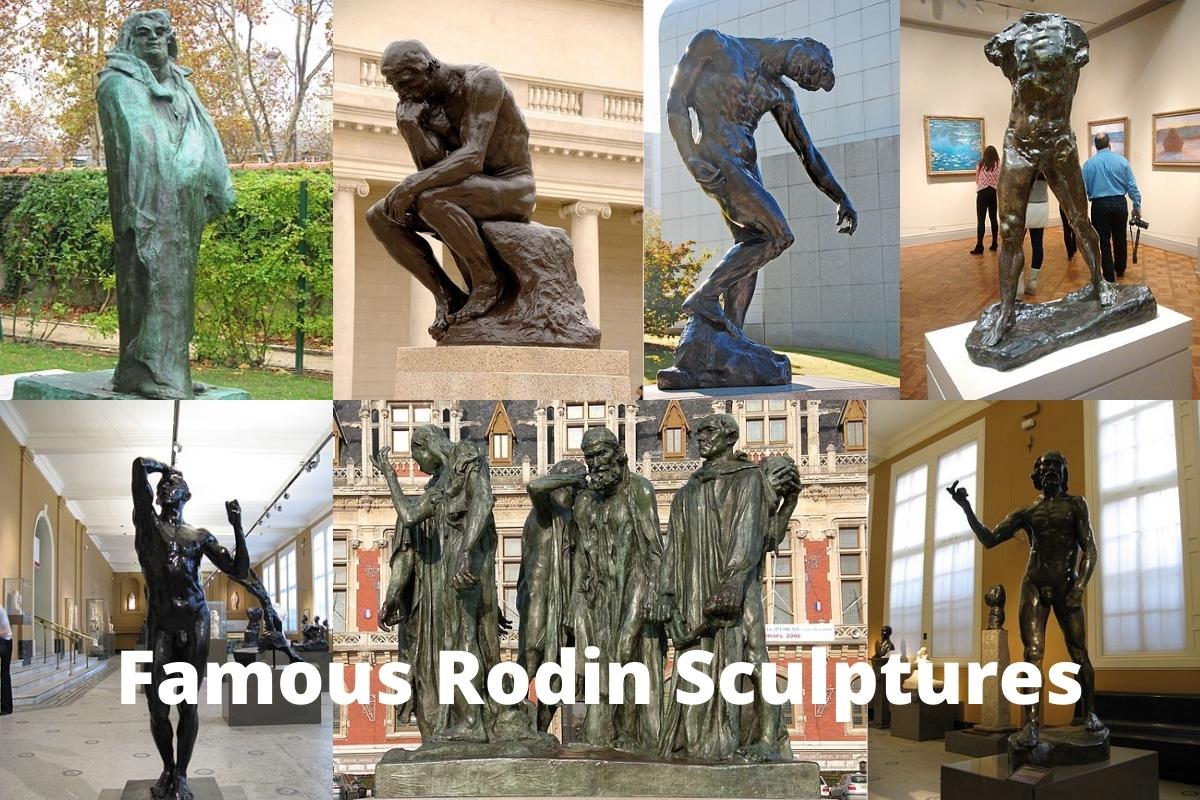François Auguste René Rodin is widely-recognized as the father of modern sculpture. His works are among the most celebrated sculptures of the 19th century and he is praised for having a style of sculpting that greatly valued the craftsmanship that went into producing such sculptures.
Despite the fact that many of Rodin’s works were considered to be controversial, some of his sculptures are recognized as the most iconic or famous sculptures in the world.
He is known for creating sculptures that presented the human form in an extremely realistic manner that critics and some other artists viewed as lacking in allegory or thematic concept.
In this article, we will examine 10 of the most famous Rodin sculptures from his prolific career and explain some of the underlying motives the great artist had in producing these masterful works.
Famous Rodin Sculptures
1. The Thinker
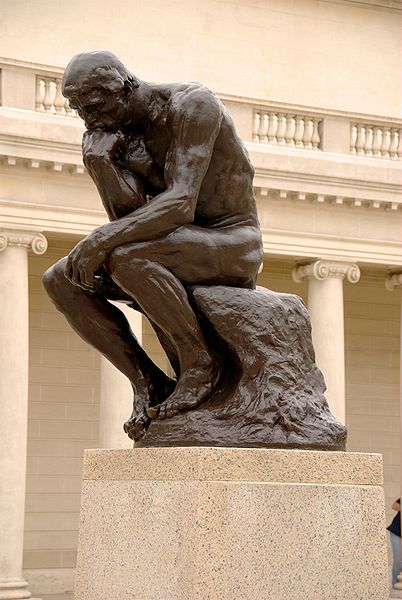
There are certain sculptures that are universally-recognized and are also among the more iconic works from history. Rodin is credited with creating a few works that are believed to be among the most widely-recognized sculptures ever created and one in particular can certainly be identified as such.
Rodin’s 1904 sculpture titled The Thinker is probably one of the most iconic works ever produced and it has been replicated and reproduced in many different ways during the modern era.
This bronze sculpture is considered to be Rodin’s most well-known work and it is one that has been reproduced nearly 30 times with many of them being created by the French sculputor himself or by his pupils.
The work was originally commissioned in 1880 and was produced as part of another work by Rodin that was titled The Gates of Hell. The sculpture was originally referred to as The Poet and Rodin drew inspiration from Dante’s Divine Comedy.
Some critics posit that The Thinker represents Dante himself sitting at the gates of hell, pondering over his great literary work.
2. Monument to Balzac
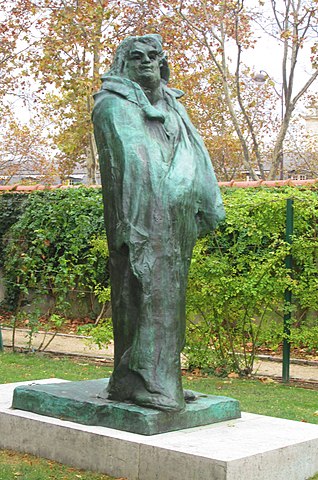
Honoré de Balzac was a famous French playwright and writer who produced some of the most well-known novels during the early 1800s. Rodin’s art career had just begun to take off in 1890 and he was commissioned to produce a sculpture to commemorate Balzac after the writer’s death.
There were at least three other sculptors that were originally supposed to create this statue of the prominent novelist, but for various reasons, it was Rodin who was finally awarded the commission in 1891.
Rodin conducted extensive research on Balzac and delved into his personal life, even visiting the writer’s hometown in order to better understand his personal traits and motivations.
Rodin created a full-size plaster model of the famous writer, which was finished in 1898 and was displayed at a Salon in the Champ de Mars. The work was said to have drawn widespread criticism and was actually rejected by the Société des Gens de Lettres, who had commissioned the sculpture.
The work was then moved to Rodin’s home in Meudon and it wasn’t until 22 years after the sculptor’s death that the statue was actually cast in bronze. It has since been lauded as one of the greatest masterpieces in modern sculpture. The statue depicts Balzac standing with a long robe draped around him, an inquisitive expression on his face.
3. The Gates of Hell
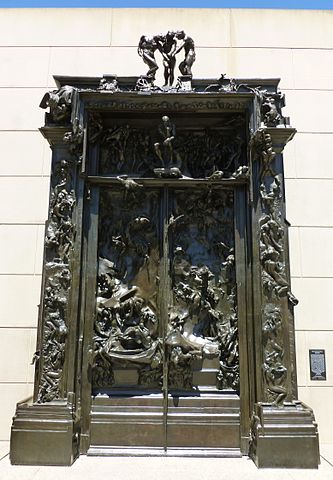
The sculpture known as The Gates of Hell is considered to be one of the greatest masterpieces in sculpting since the Italian Renaissance and the works of such artists as Michaelangelo, Donatello and Da Vinci.
This work was initially intended to be presented with The Thinker as part of an encompassing work that is related to Dante’s Divine Comedy, which was exceptionally popular during this time in Europe.
It was commissioned by the Directorate of Fine Arts in 1880 and was a sculpture that Rodin worked on extensively throughout his career until his death in 1917. It was meant to be finished in 1885, but Rodin felt that the work deserved a greater amount of focus and detail than had originally been intended.
Rodin’s intention with this sculpture was for the viewer to walk up a flight of stairs and feel a sensation that was similar to the message inscribed on the entrance of Hell in Dante’s Inferno that states “Abandon all hope, ye who enter here.”
4. The Kiss

Many of Rodin’s most famous sculptures were notoriously looked at as being highly controversial during the late 19th century in Europe. One such sculpture that received a large amount of disapproval from critics and others is titled The Kiss and was completed in 1882.
This work was originally intended to sit in front of Rodin’s The Gates of Hell along with The Thinker and others, but was instead placed in another location at the museum where it was initially displayed.
The Kiss depicts two young lovers locked in a passionate embrace as they sit atop a stone. Both the man and woman are completely nude and many critics said that the work was too evocative of eroticism to be displayed in such a prominent museum in Paris.
The sculpture was initially titled Francesca da Rimini and is said to portray two lovers from the famous manuscript, Dante’s Inferno. The name of the sculpture was changed to The Kiss after it was suggested to Rodin when the work was first exhibited in 1887.
5. Burghers of Calais
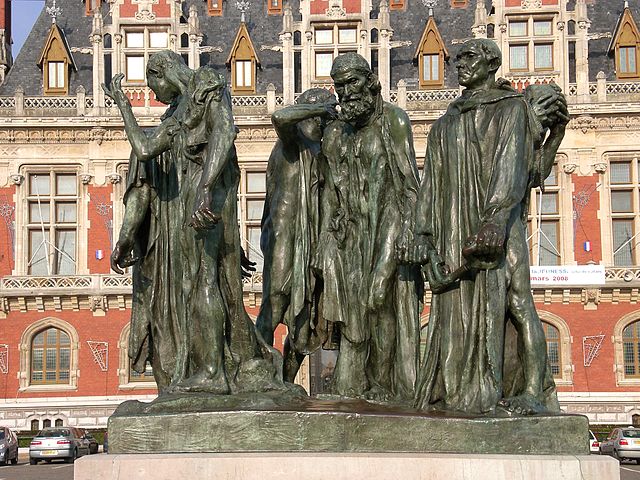
One of the most iconic sculptures in France is one that was done by Rodin to commemorate a famous surrender that took place during the Hundred Years War.
The sculpture was commissioned by the French port city of Calais and was finished in 1889 by Rodin, who titled it Burghers of Calais.
This particular sculpture has been replicated in numerous other copies by other artists since it was done. The original work was done in twelve bronze castings and six main figures from the leaders of the city of Calais during the end of the Hundred Years War.
This sculpture was originally criticized for not presenting the figures in a heroic manner, but Rodin’s work was allowed to be finished and displayed prominently in a public park inside the city.
Despite the widespread criticism, Rodin argued that the work contained a great amount of heroism in the form of humble self-sacrifice on behalf of the burghers. The figures were intended to be displayed at ground level, but were instead placed on a high pedestal in the park.
6. The Age of Bronze
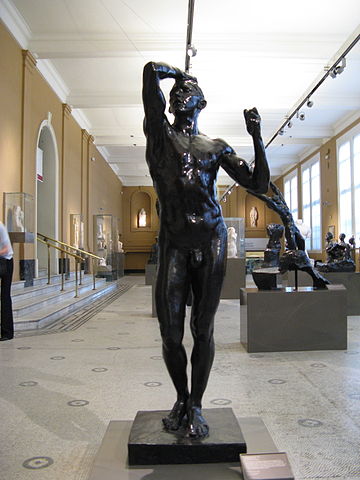
Many of Rodin’s most famous statues were done in bronze and he is considered to be among the most prominent sculptors to have ever worked in this medium when it comes to sculpting. One of his most famous statues is a testament to the bronze style of sculpting and is titled The Age of Bronze.
The model for this work was completed in 1876 and Rodin completed a number of different bronze casts for the statue afterwards. Rodin’s inspiration for the work was said to be based on Michelangelo’s sculpture known as Dying Slave.
The two works do have quite a bit of similarities and many art critics point to the unique position of the male figure’s elbow as one of the most obvious.
Rodin used a Belgian soldier to serve as a model for the cast, which was made into a life-sized statue that was 72 inches tall. Various casts of the statue can be found in prominent museums all over the world.
7. Saint John the Baptist Preaching
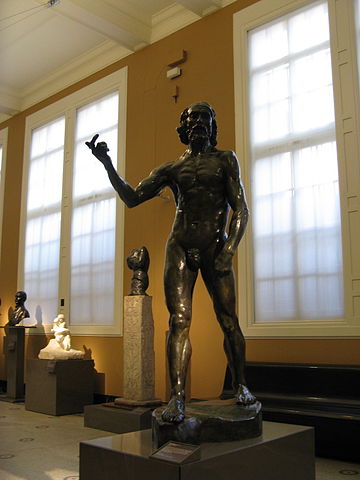
Many famous sculptors have, through history, depicted Biblical figures from the New Testament in different manners. Rodin’s portrayal of the man known as John the Baptist is another one of the artist’s works that was originally considered to be controversial when it was first exhibited in 1880.
This was another life-sized statue that stood roughly 6 feet in height and was done with an extreme level of detail.
The work is titled Saint John the Baptist Preaching and critics have argued that the depiction of a nude John the Baptist goes directly against Christian teachings related to modesty.
Rodin defended his interpretation of the famous Biblical figure, saying that he drew inspiration for the subject of John the Baptist from a peasant he met on the street.
8. The Walking Man
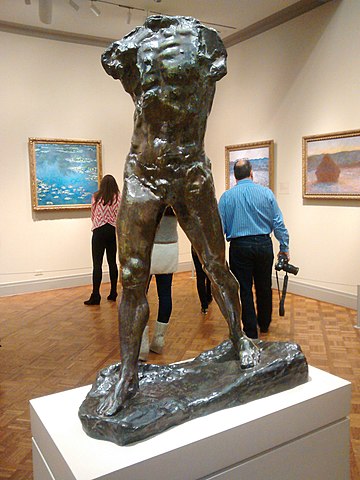
Rodin was said to have been so infatuated with the natural, balanced pose of the man who modeled for his famous work known as Saint John the Baptist Preaching, that he created another statue that was solely dedicated to the human figure.
His statue was titled The Walking Man and is virtually identical to his Saint John the Baptist Preaching work that he completed just a few years prior.
This work was finished in 1907 and is said to be among the greatest Impressionist sculptures ever created as it has a heavy emphasis on the pose itself instead of being modeled to depict any one individual.
The bronze sculpture has inspired a number of other artistic works since it was first exhibited and even led to famous American poet Carl Sandberg creating a prominent literary work based on the description of the statue.
9. The Shade
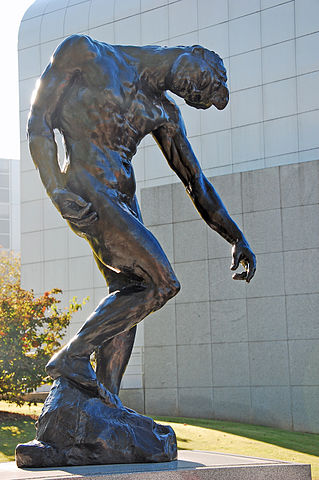
Another one of Rodin’s most well-known works is also associated with his others that were inspired by Dante’s Divine Comedy. In 1880, Rodin finished a life-sized bronze statue that was intended to be displayed in front of his other famous work titled The Gates of Hell.
The work later evolved into a totally separate work titled The Three Shades, which included a single sculpture known as The Shade.
The twisted, grotesque figure is very much in line with the demonic, tortured souls that were depicted in Rodin’s other works based on Dante’s Divine Comedy and his interpretation of Hell itself.
The work was originally created without a right hand, but one was added by Josef Maratka after Rodin instructed him to do so in 1904.
10. Eternal Springtime
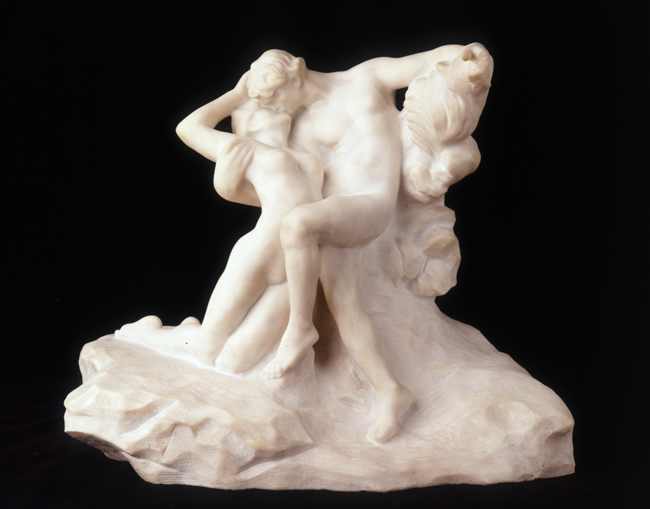
While most of Rodin’s most notable sculptures are made of bronze, there are a few masterpieces that he carved from marble. One such work is titled Eternal Springtime and was another sculpture that was intended to be part of his prolific sculpture, The Gates of Hell.
This sculpture was based on two lovers from the famous manuscript, Dante’s Divine Comedy, who are known as Paolo Malatesta and Francesca da Polenta.
It was later decided that the work appeared to portray too much love and passion to be included with such a dark sculpture as The Gates of Hell. The lovers portrayed in this sculpture were also the inspiration behind the male and female figure on Rodin’s other sculpture, The Kiss.
This work is viewed as Rodin’s most famous marble sculpture and has also be redone many times in both bronze and marble.

